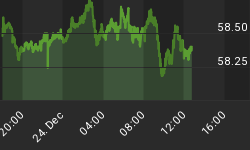In the February issue of The Morgan Report, we produced a feature that is of extreme significance to those of us who are serious about making money in the mining sector. We have diverted a bit from starting off the report with a quote and instead ask a very important question.
"What is an economic mining project?" A question any serious mining investor should ask!
The idea of how to define what really constitutes a good project from one that really might just be promotions by a junior mining concern led me to seek out an answer. In reality the answer came to me through my many contacts in the industry, specifically a certain PhD geologist, who stated to me that a myth existed that "open pit" silver mines could be profitable. This gentleman pointed out the facts that, although very few silver projects are profitable, many base metals operations are -- but every mining operation is grade dependent.
Excerpt from the February issue--
Morgan: We've spoken many times over the years and one thing that's fascinated me was talking about the fact that most open-pit silver mines are not economic! What I often hear is that grade really isn't that important because we have so darn much of this stuff that if we just open pit it, we're going make a profit, and of course I never bought into that story. You made me aware of the real economics and it is based upon Archie's Rule, so let us explore that much further.
PhD Geologist: With the exception of the Rochester Mine in Nevada, which has made some money, probably more because of the gold content than anything else, long-term open-pit silver mining is a marginal to uneconomic enterprise for a number of reasons, historically, and the idea that if you simply mine enough you will ultimately get to the point where your grade trends cross the boundary from unprofitability to profitability is, in my estimation, a very risky proposition. Archie's Rule is an excellent way to demonstrate the relationship between metals price and grade, but we should also point out that Archie's Rule is general and can be applied to open-pit or underground mining and you can apply it to silver, gold, copper, or any other commodity that you want.
Archie's Rule, named for Archie Bell, VP of exploration for Noranda for many years, is an elegantly simple rule of thumb to use to determine if a mining asset will be economic over time. Now that we're at what we hope is the bottom of the market cycle, this is a good time to check such things out!
Archie's Rule says that for any mine to be economic over time (and we're talking here about something that's going to make money throughout more than one market cycle) you have to be able to recover (Net Smelter Recovery) from your ore a minimum of twice your all-in operating costs. All-in means just that: mining, milling, smelting, refining, G&A, etc., doubling the all-in cost numbers covers your capital expenditures, a margin for the time value of money, and a 15 to 20 percent internal rate of return on your investment -- which is the minimum you have to be able to do for a mining venture to work long term.
This interview went on much longer but it seemed important to give you a taste of furthering the due diligence process when you are making the decision to invest in a junior mining operation.
It is an honor to be.
Sincerely,
















